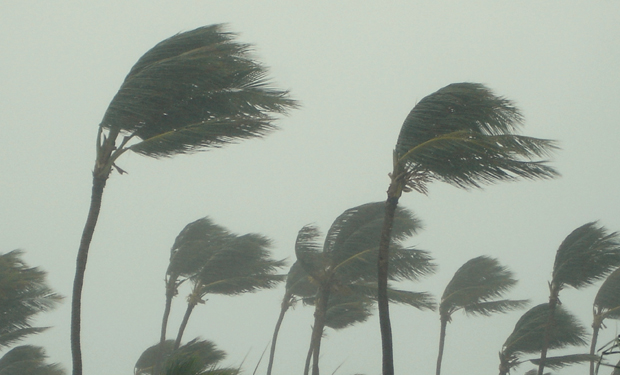2018 brought multiple, unprecedented natural disasters, including hurricanes, floods, and in the United States, the deadliest wildfire in California’s history. After the immediate emergency is over and the media attention wanes, communities must deal with the long process of recovering and rebuilding. Yet, some of the greatest challenges that disaster victims face come not only from the disaster itself but also from the long-term health problems stemming from the event. In the immediate aftermath, physical injuries and infections must be treated and controlled. Long-term needs include mental and psychological assistance and reinstatement of the infrastructure of the health services system. While immediate casualty numbers are often cited following a natural disaster, it’s the insidious and long-lasting health effects that can hurt communities for years.
Immediate Concerns
Natural disasters can cause immediate physical threats. Collapsed buildings and flying debris can injure, and without proper sanitary care, even small wounds can become infected. Disasters can also, either directly or indirectly, release hazardous materials. Volcanic eruptions and fires release particulates in the air that make breathing difficult and exacerbate chronic lung conditions, for instance. Indirect releases of environmental contaminants can happen when industrial or agricultural sites are damaged or leak due to a disaster. These releases can be small, such as paints and other household toxins washed into floodwaters, or large, such as oil leaking from severed pipelines after an earthquake.

In the days and weeks after Hurricane Harvey submerged much of metropolitan Houston, TX, in 2017, University of Delaware epidemiologist Jennifer Horney was there to better understand how such a disaster could impact health (right, photo credit: University of Delaware College of Health Sciences). One week before Harvey made landfall, Horney and her team received a grant from the National Institute of Environmental Health Science to study the environmental health impacts of disasters, including the chemicals to which people might be exposed because of the disaster and the associated health impacts.
“Houston was a good place to study this because it had 42% of the nation’s petrochemical industrial capacity and is one of the only cities in the United States without zoning, so you have a lot of neighborhoods located adjacent to industrial facilities,” says Horney. “When Harvey hit, we were able to go to our established community partners and ask what people were concerned about and how we could collect data to address those concerns.”
Horney found that people’s biggest concern was what was in the flood waters and the sediment left behind.
Another common concern after natural disasters is the risk of infectious disease. However, the risk for outbreaks after natural disasters is low, especially when the disaster does not displace large numbers of people. Among displaced populations, overcrowding, lack of access to safe water and sanitation, and lack of access to healthcare services can all contribute to the spread of diseases such as diarrhea and respiratory infections. It is crucial to assure access to safe water and waste disposal after a disaster, as well as to control disease vectors like mosquitoes and flies.
Thinking Long-Term
In the short-term, injuries and infections must be prevented and treated. But significant long-term health impacts can result if the health service infrastructure is damaged. In addition to facilities incurring damage, valuable equipment and medicines can be lost. Lack of power may also affect the proper functioning of health facilities.

Horney says that the interruption of services caused by natural disasters exacerbates chronic medical conditions. “One thing we continue to see after disasters is people unable to fill prescriptions, for example, or obtain services like dialysis,” Horney says. “After Hurricane Katrina, about 70% of people were not getting their regular care for chronic conditions.”
David Eisenman, director of the Center for Public Health and Disasters at the University of California, Los Angeles, CA, agrees with Horney (right. Photo courtesy of David Eisenman.). “One of the major causes of hospitalizations and deaths after disasters is people with chronic illnesses, such as diabetes, kidney disease, heart disease, and lung disease, become sicker,” says Eisenman. “The biggest problem of most disasters is not the direct deaths that occur. Most disasters in the U.S. are chronic disease emergencies.”
“The biggest problem of most disasters is not the direct deaths that occur. Most disasters in the U.S. are chronic disease emergencies.” – David Eisenman
The immense stress and trauma experienced by disaster survivors can also leave lasting psychological wounds. “We see post-traumatic stress disorder, depression, and anxiety. Sometimes alcohol and substance abuse increase and sometimes violence in homes goes up,” says Eisenman. The mental health impacts of natural disasters can linger for months or even years. Horney says that more than 3 years after the wildfires in Bastrop, TX, people affected by the disaster still reported elevated stress and symptoms of anxiety and depression.

According to J. Brian Houston, director for the Disaster and Community Crisis Center, University of Missouri, more people will typically have some sort of mental or behavioral health reaction to a disaster than will directly experience the event (right, photo credit: Sheridan Kahmann Photography). This includes members of the affected community, first responders, and people consuming media coverage of the event.
“There is a range of reactions that we see after a disaster that can impact people’s functioning, their ability to work or get along with their family,” says Houston. “The public health challenge is matching resources and services to people’s needs: getting the people who need a little assistance that assistance and getting people who need more help connected to services and supports that can help them.”
Responding and Rebuilding
While we can’t prevent a natural disaster from occurring, there are ways to improve preparations and solidify infrastructures to better protect public health. Disaster-preparedness plans should take into account the ongoing health needs of disaster survivors. One thing that can be done before disaster hits is identifying the populations most at risk.
“It’s easy to think about disasters as equal opportunity events,” says Houston. “In some ways, that is true. No one is immune from a tornado; anyone’s house can be affected.
“But the reality is that socioeconomic conditions profoundly influence the outcomes following a disaster.”
Sarah McCool of Georgia State University says it comes down to how much resilience people have, which is affected by factors like poverty, immigrant and minority status, and English language proficiency. “Populations that lack resilience in the first place because of something like their low-income status are going to be disproportionately affected by natural disasters because they may not have things like insurance or access to a vehicle in which to evacuate,” McCool says
Compounding the problem is that socially vulnerable groups are often physically vulnerable as well, living near the coast or on a flood plain, for instance. These populations could be most impacted by public health interventions such as improving evacuations or ensuring certain services are offered in shelters.
Social support also contributes to resilience. “When people have more social support, people around them to provide practical and emotional assistance, they tend to do better than people who are lacking that support structure,” says Houston. “Support structures, a caring community—these are things that can be created and nurtured before disaster occurs.”
Even with plans and preparation, long-term recovery from a natural disaster is challenging, says McCool. She says for people and communities to rebuild and recuperate, governments, international agencies, and nongovernmental organizations must all commit to long-term recovery.
“It’s about setting people’s lives back into some sort of normal trajectory as soon as possible,” says Eisenman. “This means kids going back to school, people going back to work and living in their homes, and businesses getting up and running. Restoring people to what looks like their former lives really helps a lot in terms of reducing stress and improving people’s access to things they need.”
The New Normal
While there is a lot of pressure in the immediate aftermath of a disaster to get things back to the way they were, people may need to get to a new normal that considers the growing impact of climate change. Events like storms and floods are increasing in frequency and severity.
The historical ways of understanding our risks have been adaptive and helped us understand how to live with the natural disaster risks in our communities (e.g., earthquakes near fault zones or floods near coasts and rivers). The problem with climate change is that it is altering those historical calculations and changing people’s risks.
“We used to talk about 100- or 500-year flood levels, but those metrics in many cases do not apply any longer,” says Houston. “Places we thought were safe, places that haven’t flooded in 100 or 500 years, could flood now. It was challenging enough when we knew the risks, but climate change is changing our understanding of what and where those risks are.”
Horney says that when Hurricane Harvey made landfall in Houston, it was the wettest tropical cyclone on record. “Within one year, we had three of the top ten wettest,” she says. “If things continue to get more ‘unprecedented’ over time, it’s going to test capacity.”
Eisenman says we’re seeing stressors on the system now that we’ve never seen before, such as concurrent natural disasters. “In California, you can have concurrently a drought, more frequent heat waves, and wildfires; these could all happen within the same part of the state within the same time frame,” Eisenman says. “We’ve not seen that before and we are going to see these concurrent crises and disasters more frequently.”
Horney emphasizes the importance of having a predisaster recovery plan that can help people and communities not only get back to normal but also become more resilient to similar or more intense disasters in the future. “Agencies and community groups need to agree on priorities and make some of the difficult decisions before a disaster occurs,” she says.
This could prove more challenging as our risks change but is necessary to build resilience and get communities back to a “new normal,” according to Houston. “We need to give more thought and effort to figuring our adaptive and sustainable ways to curtail those risks but also live in a changing, riskier environment,” he says.
References & Resources
- Keim, M. E. (2008). Building human resilience: The role of public health preparedness and response as an adaptation to climate change. American Journal of Preventive Medicine 35(5): 508-516. Doi: 10.1016/j.amepre.2008.08.022.
- Noji, E. K. (2005). Public health issues in disasters. Critical Care Medicine 33(1): S29-S33. Doi: 10.1097/01.CCM.0000151064.98207.9C.
- Watson, J. T., Gayer, M., and Connolly, M. A. (2007). Epidemics after natural disasters. Emerging Infectious Diseases 13(1): 1-5. Doi: 10.3201/eid1301.060779.
- Young, S., Balluz, L., and Malilay, J. (2004). Natural and technologic hazardous material releases during and after natural disasters: A review. Science of The Total Environment 322(1-3): 3-20. Doi: 10.1016/S0048-9697(03)00446-7.



